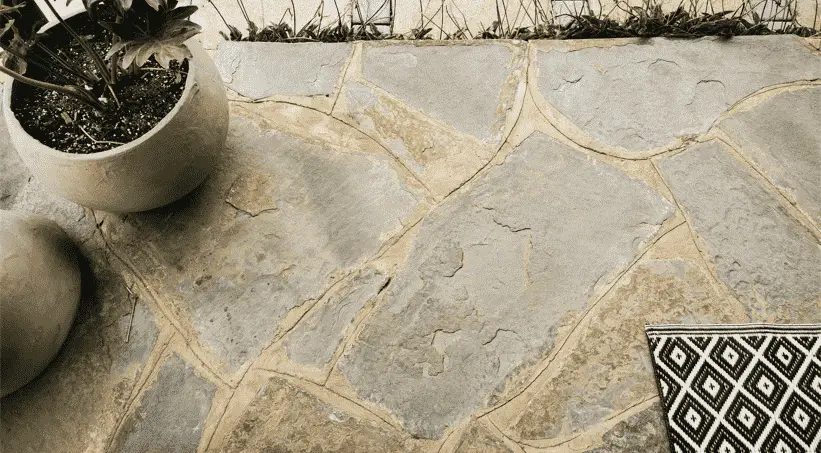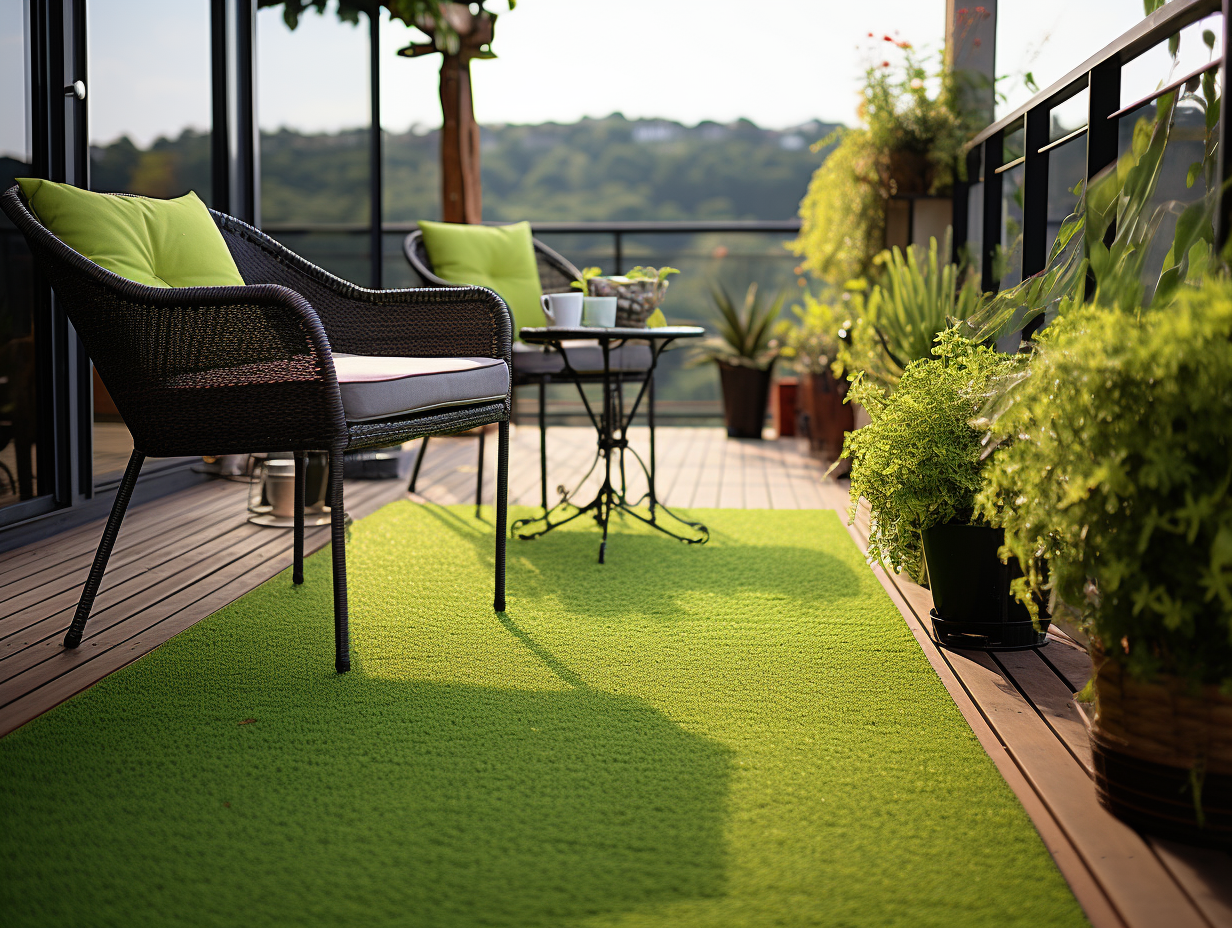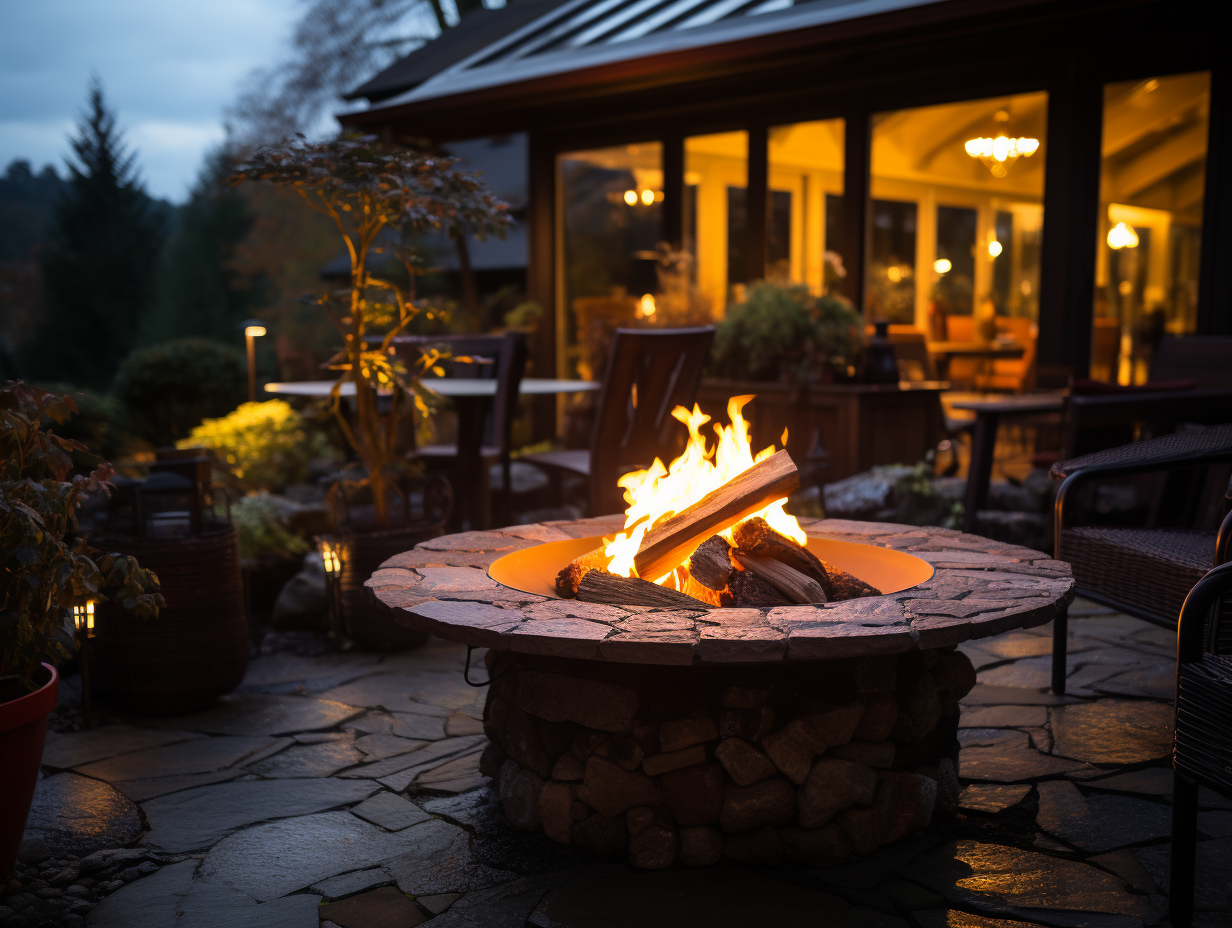The best way to clean patio slates is by mixing equal parts of stone cleaner and water into a thin paste, then using it on any discolored areas. Allow 5 to 10 minutes for the cleaning solution to act on the discolorations. Scrub your patio with a sturdy brush in this manner. Apply plenty of force to obtain optimum results.
A slate patio is an attractive and durable addition to any home. Slate is a natural product, so it may require some cleaning and resealing from time to time in order to maintain its appearance.
Slate can be cleaned with very few chemicals and with just a little patience and know-how, you will have your slate patio looking like new again in no time.

How To Clean A Slate Patio
A slate patio can be a difficult surface to maintain. Because of its delicate, porous nature, it is very easily stained and etched by harsh chemicals and water spots. Natural Slate is also sensitive to acid rain.
We found some great pressure washers HERE to make life easier.
But you will want your patio slate to look new again so the following are some simple guides for doing just that:
1. Remove Dust
First, remove any loose dirt, clean the surface first by sweeping, dusting, or mopping it.
2. Use Dish Washer Detergent
Your slate patio may have become stained over time, so it is important to determine what the stain is made of before attempting to clean it.
A small amount of mild dishwashing soap mixed with warm water can be used on most stains unless otherwise specified by the manufacturer’s directions.
If you are cleaning a natural stone product, test the soap in an inconspicuous area to make sure it won’t harm the slate tiles.
If there is mildew on the patio slate, use a mixture of baking soda to the cleaner you used. Let it sit on the slate for a few minutes before rinsing it off.
3. Scrub The Area
Scrub any areas of dirt or mildew from your patio using a stiff brush that has been dipped into warm water and dishwashing liquid. If there is a strong build-up of grime on your patio, it may be necessary to use an industrial cleaner (Found Here) and some elbow grease.
Read More: [HOW TO] Clean My Patio Without A Pressure Washer (Pictures)
4. Rinse
Rinse off your patio after scrubbing it with dishwashing soap and water.
After you have finished scrubbing your patio, it needs to be rinsed with clean water. This is done in order to remove any traces of soap residue that may remain on the slate.
If you are unable to rinse the entire patio at once, simply scrub one section of the patio and rinse that area before moving on to the next section.
5. Let The Slate Dry
Allow your patio to dry for a few hours before applying a clear sealer to it using a natural bristle brush or a soft cloth. This will help prevent stains from setting into your slate tiles and help protect them from future grime.
6. Apply Sealer
Apply clear sealer to your patio every year or two in order to keep your slate tiles looking their best. (I Found Slate Sealer Here).
A simple baking soda and water solution can be used on light grime, while a tri-sodium phosphate cleaner is better for tougher stains. Be sure to follow the manufacturer’s directions on how much of the cleaner to add to the water when you are cleaning your patio.
By following these simple steps, you will be able to maintain the look of your slate patio in no time.
If stubborn stains do not come off with these techniques, it is sometimes necessary to use a commercial sealer (Found Here) that is made for natural stone products in order to keep your patio looking beautiful.
PRO TIP: Even if your slate doesn’t appear dirty, you should clean it at least once every two or three months with water and mild detergent to minimize gunky buildup and staining.
It’s also a good idea to seal your porous slate (which is very absorbent) with a stone-and-tile sealer.
How Do You Get Stains Out Of Slate Paving?
Slate paving can become stained by BBQ, motor oil, or even wine. It needs to be cleaned regularly to keep it looking at its best.
If the stains are caused by something like oil then they can be very hard to remove and may require specialist cleaning products.
However, if your slate tiles are relatively new and only have light marks on them they can be removed using household products.
Clean Slate With Hydrogen Peroxide
Place equal parts of water and hydrogen peroxide in a spray bottle, then spritz the affected area.
Allow it to sit for 5-10 minutes before scrubbing with a soft scrub brush (not steel wool) or a soft-bristled brush. If you have colored grout on your slate floor, be careful as this might damage and fade the color of your grout.
For more stubborn stains on the patio slate, combine equal parts peroxide and baking soda into a bubbly paste. When the bubbles have died down, apply the paste to the stain and allow it to set.
Then clean the slate with a damp, warm cloth.
Can You Use Vinegar On Slate?
No, You should avoid cleaning slate with vinegar, since it can damage and discolor slate. Vinegar and solvent mixtures containing citrus extract are acidic and might damage your slate floor.
The use of acid cleaners may create a white deposit as the acid reacts with the calcium in the stone.
Over time, this deposit may cause a dulling or whitening of the slate. The surface of stone slates is more porous than marble and can easily develop a white chalky residue if not properly cleaned.
Can You Clean Slate Patio With Bleach?
Yes, bleach is a good cleaning agent for patio stones, but the surface should be tested in an inconspicuous area first.
Porch and patio owners often ask if it’s possible to clean slate with bleach. Slate is made of clay minerals that are more resistant to weathering than most other types of outdoor tiles or bricks.
This makes slate typically a better choice for a patio surface, but also means that it is more susceptible to staining from spilled liquids.
No matter what type of tile you have on your porch or patio, the best way to keep it looking new and stain-free is to clean spills as soon as they happen.
Cleaning Slate Tiles with Bleach
Regular household bleach is a very common cleaning agent that can be used to keep slate tiles looking clean and new.
The bleach should always be diluted using water, no stronger than one part bleach to nine parts water.
Start by applying the bleach solution with a spray bottle to the affected area of the stone.
Allow it to sit for two or three minutes, then use a sponge or soft brush to scrub the area clean.
Rinse with a gentle spray from a garden hose, using a light touch so as not to force the dirt back into the pores of the slate.
Bleach can be used on most types of outdoor patio tiles but is best avoided for stone surfaces that are porous in nature.
Slate and sandstone tiles are both porous, so it’s best to avoid using bleach on these if possible.
It may not take the stain out completely, and the same bleach solution that cleans stains well may eventually damage the surface over time.
If you choose to try cleaning slate with bleach, always test it in an inconspicuous area first.
Can You Pressure Wash A Slate Patio?
Yes, you can use a pressure washer on a slate patio on a low setting, as it may damage some natural stone.
However, if you want to remove dirt from the surface of the patio without using a pressure washer, you can use a steam cleaner, which uses hot water and high pressure to cleanse surfaces.
Using a steam cleaner on a slate patio will soften mud and leave it on the surface of the patio, which will attract dirt and dust.
Steam cleaners work best on natural stones such as slate. They do not use chemicals, so there is no need to rinse off surfaces after cleaning them.
Pressure washing a slate patio with hot water and chemicals changes the chemical balance in the stone and can cause damage or discoloration to the stones.
How Do You Get The Patio Slate Wet Look?
The easiest way to make your patio slate shine and have a wet look is by cleaning it regularly and using a glossy sealer.
We Found A Great Wet Look Sealer HERE
Use a topical glossy sealer to provide your slate tiles with a polished, gleaming appearance. You may choose between a solvent-based or water-based sealer, but a solvent-based one will last longer and be more durable.
Can I Use WD40 To Clean Patio Slate?
Yes, WD40 can be used to clean the patio slate if it is oil-based. Oil-based cleaners must always be used for these surfaces to prevent the dirt from becoming a part of the stone itself.
Thoroughly spray WD40 onto the patio and scrub with a stiff bristle brush. If you have moss, algae, or other stains on your patio, simply spray the surface and let the product sit as needed for as long as necessary to remove contaminants.
Once all of the dirt or moss has been scrubbed away, spray the area again with WD40 and wipe clean with a towel to prevent the further gathering of contaminants.
The WD40 is a very effective cleaner for patio slabs and stones, but you do have to consider the following:
-does the stone require a light or strong cleaning?
-does the stone need a good coat of sealer that can be solvent-based? If so then this product will not work. If not, then it can be used as a final sealant itself.
-be sure to clean the stones with a clean, soft brush to avoid scratching or marring of the surface
Conclusion
The first thing we need to do is use water and soap as our primary cleaner. Use the soapy mixture in your hands, scrubbing it into the dirt stains until they disappear.
Rinse off any leftover residue with plain water and dry everything off with a towel or cloth.
You can also make an all-purpose outdoor cleaning solution by mixing together 2 tablespoons of dishwashing liquid, 1 tablespoon white vinegar and 3 cups of hot tap water in a spray bottle.

![What Gravel To Use For Patio Base [Best Options]](https://www.cleverpatio.com/wp-content/uploads/2021/11/What-Gravel-To-Use-For-Patio-Base-270x180.jpg)


Leave a Reply